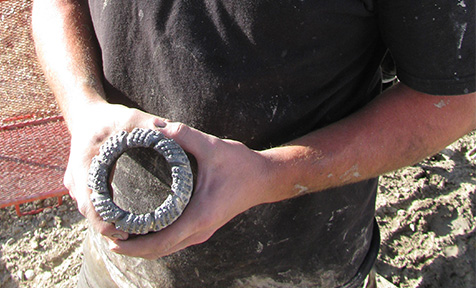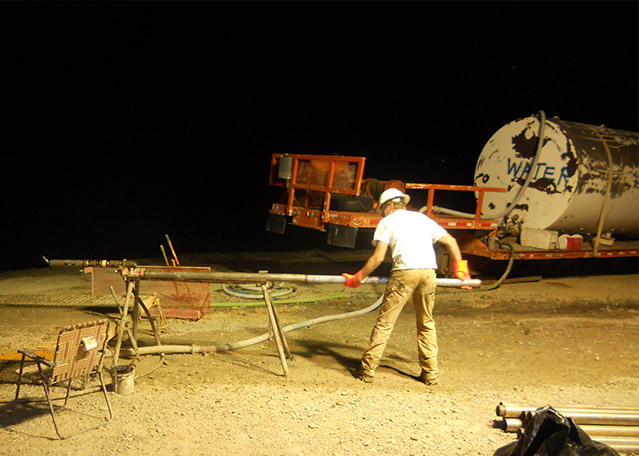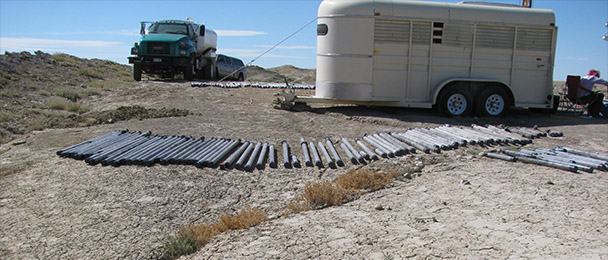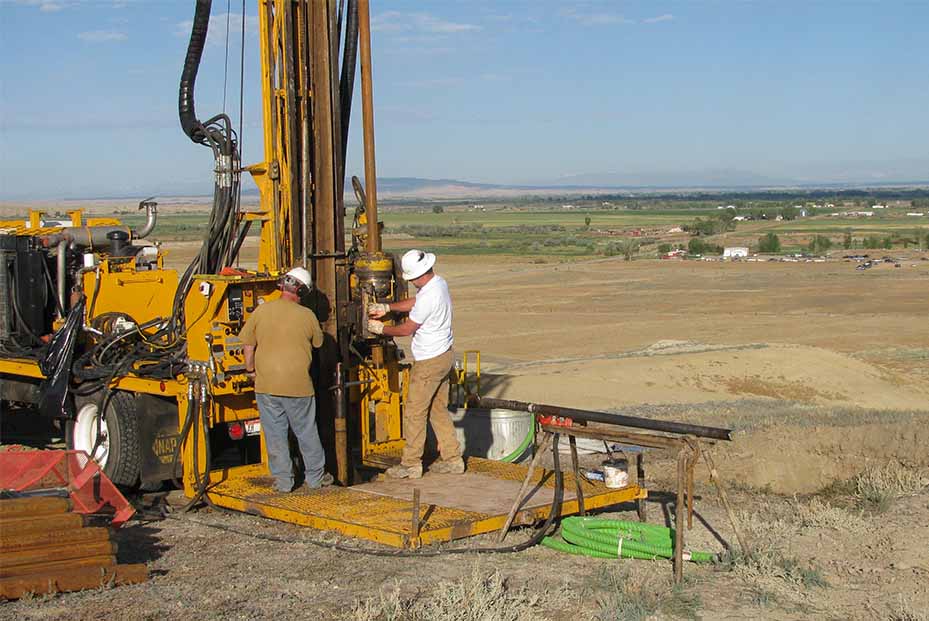How Do You ... Drill for Fossils?


Abby Telfer is FossiLab Managerat the Smithsonian National Museum of Natural History. This article was adapted from her post on the blog Digging the Fossil Record: Paleobiology at the Smithsonian, where this article first ran before appearing in LiveScience's Expert Voices: Op-Ed & Insights.
Drilling rigs have joined brushes, picks and shovels on the list of tools used by paleontologists to study evolution, ancient environments and climate change.
Smithsonian paleobiology researchers Kay Behrensmeyer, Brian Huber and Scott Wing are currently participating in separate projects in Kenya, Tanzania and Wyoming that used drilling rigs to cut holes deep into the ground, extracted hundreds of feet of cored rock, and gained information that was inaccessible before.
Drilling crews did the heavy lifting, operating the rigs to get many short sections of core out of the ground, but the work of describing and sampling the cores turned into marathon workouts for the scientists!
Why collect drill cores?
When scientists collect fossils from a rock outcrop, they can learn a lot about the environment and climate in which the fossilized organisms lived. The scientists examine the rock surrounding the fossils for ancient biomolecules like plant waxes and lignin; minute fossils of pollen and microorganisms; charcoal, which can be evidence of dry conditions and forest fires; and other clues. Researchers may compare data from older and younger rocks to learn how conditions changed over time, but information from surface outcrops usually doesn't provide a complete record of ancient environments and climate over long time spans. It can be difficult to locate outcrops that represent an entire period of interest, and surface processes, including weathering, may destroy or contaminate information on the surface (particularly from biomolecules) that is well-preserved deep underground.
Coring allows scientists to access a more continuous record than an outcrop because drilling rigs cut deeply below the surface, collecting "fresh" samples from rock that may have formed over the course of hundreds of thousands, or even millions, of years.
Get the world’s most fascinating discoveries delivered straight to your inbox.
How it's done
As the "cutting shoe" of a drill bit rotates, it cuts a cylinder-shaped core of rock that is captured in the "core barrel," a hollow pipe located behind the bit.
When the drill has gone deep enough to fill the core barrel, drilling stops and a cable pulls the core barrel to the surface. Day and night, workers extract the pieces of core from the core barrel, and send the barrel back down the hole to capture the next core section.
As the drill bit advances deeper, it cuts into older and older rock. The extracted cores are labeled (very carefully!) and set out for the scientists to examine. It is easy to turn a section of core around and forget which way is up or down, so there are many safeguards to keep that from happening. Drilling continues until the scientists determine that they have collected the oldest rock they need.
In a future post, Huber will describe a drilling project in Tanzania that is helping scientists understand how ocean temperatures changed during a time, 112 million to 66 million years ago, when global temperatures were extremely warm. In another post, Behrensmeyer will describe her experience analyzing cores that she and her colleagues estimate to represent the last 500,000 years of environmental history in a part of Kenya where early human fossils have been found. Wing's blog posts about drilling in Wyoming are available in Smithsonian Magazine.
The views expressed are those of the author and do not necessarily reflect the views of the publisher. This article was originally published as From the Field: Core Exercises #1 on the blog Digging the Fossil Record: Paleobiology at the Smithsonian.





